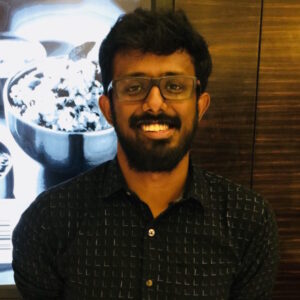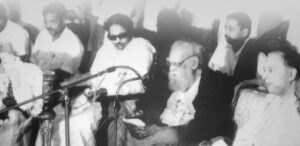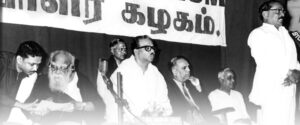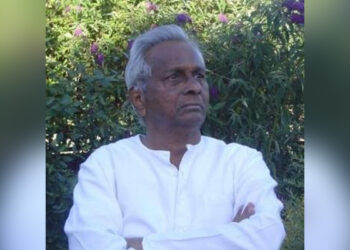Manuraj Shanmugasundaram
Advocate,
Madras High Court &
Spokesperson, D.M.K.

Vignesh Karthik K.R.
Postdoctoral
Research Fellow
This year marks the start of the hundredth year of the Self-Respect Movement. An emancipatory movement unlike any other, its aim was to empower individuals and communities to challenge and overthrow the hierarchical structures that oppressed them. But the movement traversed farther to nurture rational thinking, inspire subaltern politics, advocate women’s rights and promote social justice. Though the Self-Respect Movement is synonymously associated with the Dravidian Movement, there are key but subtle differences. Together, both movements continue to guide the political outlook of Tamil Nadu and provide an undisputable counter-balance to the emergence of the majoritarian onslaughts across Indian society.
The emergence of self-respect:
Over the last decade or so, September has been celebrated as ‘Dravidian Month’ to commemorate the historical highlights of the Dravidian Movement. This month, the Dravida Munnetra Kazhagam (DMK) commemorates three landmark events: the birth date of C.N.Annadurai (‘Anna’); the founding of the DMK and the birthdate of E.V.Ramasamy (‘Periyar’). While Anna is regarded as the political patriarch of contemporary Tamil Nadu, Periyar is considered its compelling thought leader. To understand the modern social architecture of state, it is essential to track the impact of the Self-Respect Movement, which Periyar conceptualised and carried through for nearly 50 years.
In the history of the Self-Respect movement, the year 1925 is regarded to be significant for two key reasons: the launch of the first issue of the Tamil weekly, Kudi Arasu (The Republic) in May, and Periyar’s departure from the Indian National Congress (INC) in November. While the last mentioned event is commonly regarded as marking the formal beginning of the Self-Respect Movement, Kudi Arasu, even in its early months, introduced a new dynamic in the erstwhile Madras Presidency. The publication exhibited a strong zeal for social reform beyond merely advocating the political gains of communal representation. After leaving the Congress, Periyar used Kudi Arasu to adopt an unrestrained approach in criticising the then INC and Brahminism, a term which he used to refer to the horrors of the Hindu caste orthodoxy it espoused.
In the Madras Presidency, the Justice Party had formed Government in 1920 and was a vanguard for non-Brahmin politics, which also nominated the first woman Legislative Council Member, Dr.Muthulakshmi Reddy and issued the Communal Government Order advocating reservations in government employment. Parallelly, Periyar organised the first Self-Respect Conference in Chengalpet (Tamil Nadu) on February 17, 1929 which was revolutionary even by today’s standards. The conference addressed equal property rights for women, abolition of caste names, education and employment opportunities for women, marital equality and more. The participation of the senior Justice Party leaders including the then Chief Minister of Madras Presidency at the Chengalpet Conference testified its popularity and success. Periyar leveraged this to turn the focus from mere non-Brahmin political representation to the remedies for religion sanctioned lower caste groups, the depressed classes, and women within society.
The first 100 years and Self-Respect 2.0
The Self-Respect Movement is known for its radical social reforms including the introduction and the popularisation of self-respect marriages, which removed the necessity for Brahmin priests and religious rituals. By doing so, Periyar threw down the gauntlet to traditional Hindu practices controlling marriage. He fashioned self-respect marriages in a manner to grant women autonomy, equality and dignity, and symbolised a break from tradition. Self-respect marriages were enacted into law when the DMK formed the government in 1967, thereby marking the first legislative achievement for the Self-Respect Movement.
Another key limb of the Self-Respect Movement was its advocacy for women’s liberation from oppressive social norms. This included championing causes such as widow remarriage, the right to divorce, the right to property, and even abortion. Additionally, the movement criticised ancient texts that degraded women, and actively promoted contraception as a means of empowering women to control their own bodies. Moreover, the Self Respect Movement was also pivotal in its promotion of inter caste marriages, which was seen as a push-back to the patriarchal forces controlling choice of partner and marriage.
Throughout the pre-Independence years, the Self-Respect Movement was seen to advocate the prioritisation of social reform over political independence. This has come to be a major critique of the movement itself, with some commentators going as far as accusing self-respectors to be monarchists and separatists. This hides a complex relationship between the movement and the nationalist cause. The Self-Respect Movement was not opposed to independence but warned of a replacement of British rulers with elite Hindu caste groups. Over the years, the idea seeded by this movement has resulted in a greater understanding of political autonomy and has contributed to the evolution of the spirit of federalism within the country.
The movement has its set of challenges. It is essential for every movement to redefine itself and its role in contemporary society. Looking around the country, the biggest challenge and opportunity for the Self-Respect Movement is the cultural homogenisation led by the right wing. The ideology of Hindutva poses a significant challenge to the principles of the Self-Respect Movement by promoting a singular identity that seeks to assimilate India’s diverse cultural practices into a standardised framework. This homogenisation undermines the distinct regional, linguistic, gender and caste-based identities that the Self-Respect Movement has historically sought to protect and promote. By marginalising movements that challenge the social order and resisting social reforms that address inequalities, Hindutva threatens to erase the cultural diversity and progressive changes advocated by the Self-Respect Movement. The movement’s future relevance depends on resisting this push towards cultural uniformity and continuing to champion individual identities with particularistic grievances to protect the larger ideal of social justice.

Kalaignar M. Karunanidhi, the then Chief Minister of Tamil Nadu attended a Conference of the Movement wherein Thanthai Periyar addressed. K.Rajaram, Speaker of the Tamil Nadu Legislative Assembly and the present DK President Dr. K. Veeramani were present.
The modern world around us is seeing the rise of more complex identities where caste intersects with class, religion, gender and sexuality. As gender norms continue to evolve, the movement would need to address new gender-related issues, such as LGBTQIA* rights and gender fluidity, which were not a focus when the movement originated. Integrating these concerns of intersectionality into the next version of the Self-Respect Movement while staying true to its foundational principles will be a critical challenge.
The information era, today, is rife with misinformation and falsehoods in the guise of free speech. The digital and social media are manipulated to reinforce and aggravate caste biases and group prejudices. The movement has to engage particularly with young people in order to rebut and resist this modern-day menace. It is also equally important to continuously communicate with the generations of young persons who are far removed from traditional caste practices but still susceptible to right-wing propaganda, questioning anti-caste reforms and social policies such as reservations.

Periyar was at The Rationalists’ Forum Meet held in 1970. Navalar V.R. Nedunchezhian, Anbil Dharmalingam, N.D.Sundaravadivelu, the Vice-Chancellor of the University of Madras participated. The Patron of the Forum,
Asiriyar K. Veeramani was in conversation with Periyar.
A critical mission
As the Self-Respect Movement enters its second century, its mission is more critical than ever. Confronted with cultural homogenisation and rising divisive ideologies operationalised by a host of organisations including the Rashtriya Swayamsevak Sangh, coincidentally also established in 1925, the movement most intensity its fight for social justice, equality and rationalism. By boldly addressing contemporary issues, it can sharpen its impact while staying true to its roots. The future of an inclusive society hinges on this renewed vigour. Now is the time to reignite the movement’s revolutionary spirit, ensuring that its ideals not only endure but also lead the way for generations to come.
Courtesy: ‘The Hindu’ – 28.09.2024






